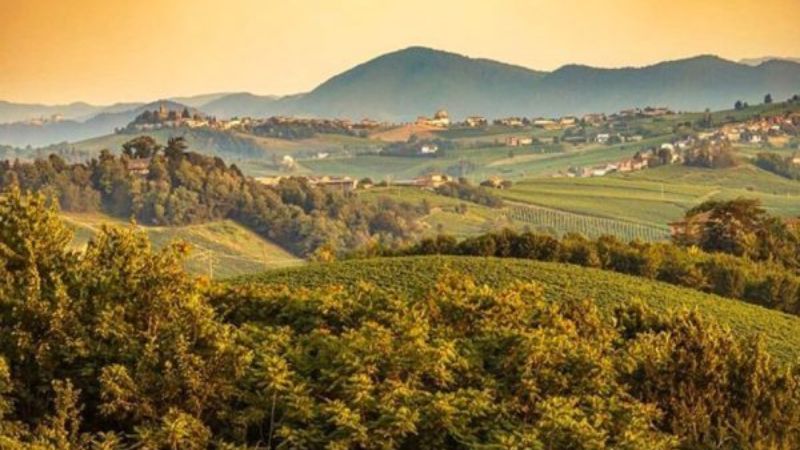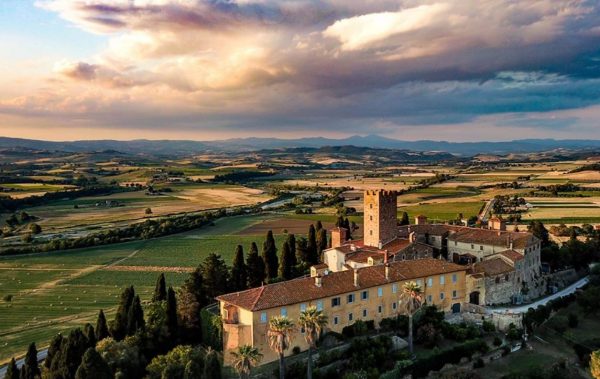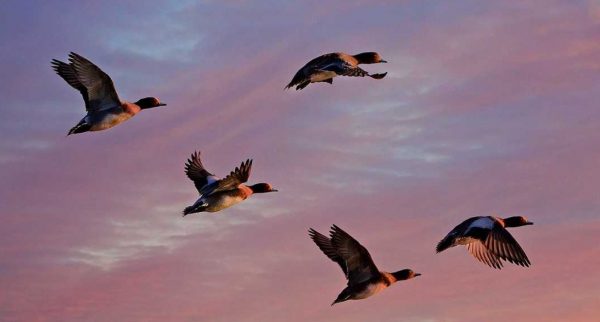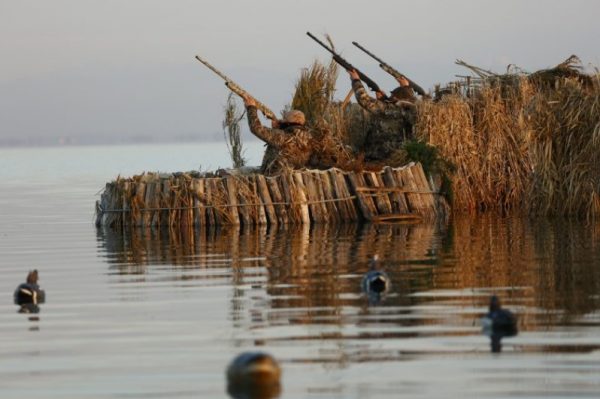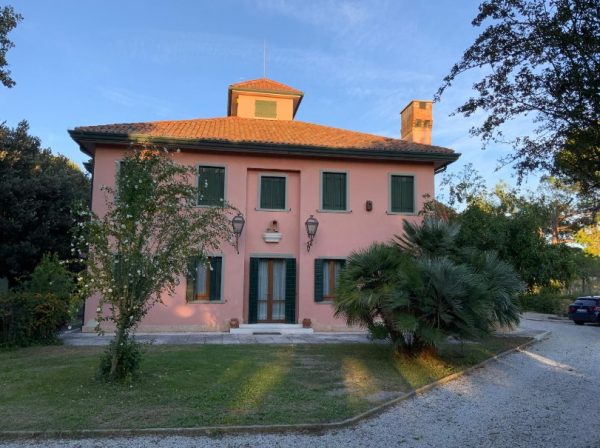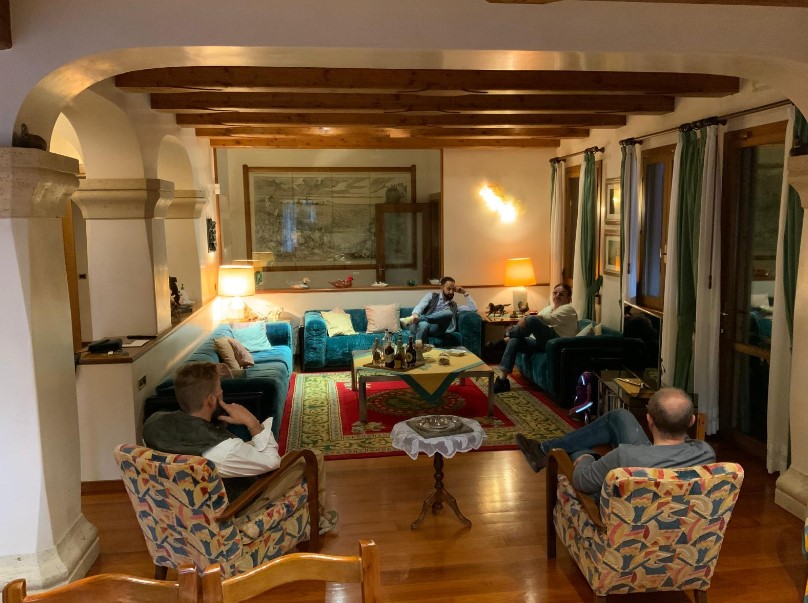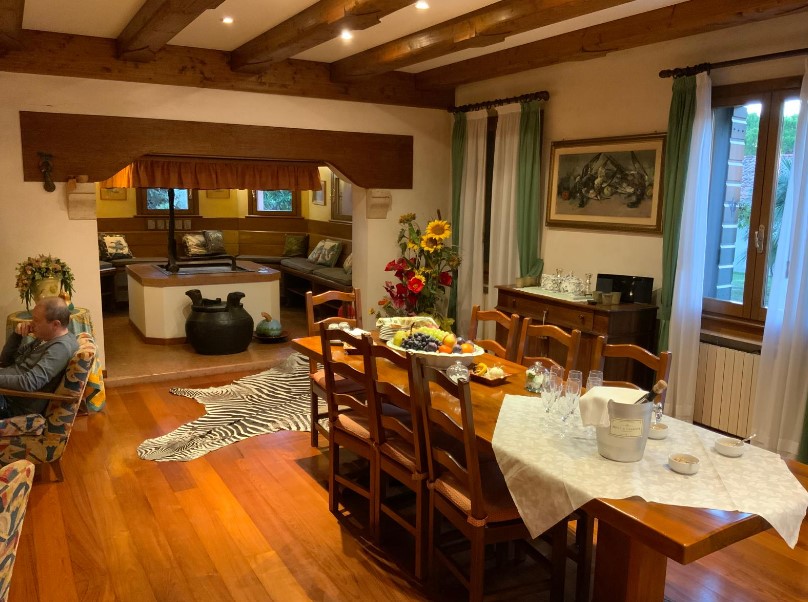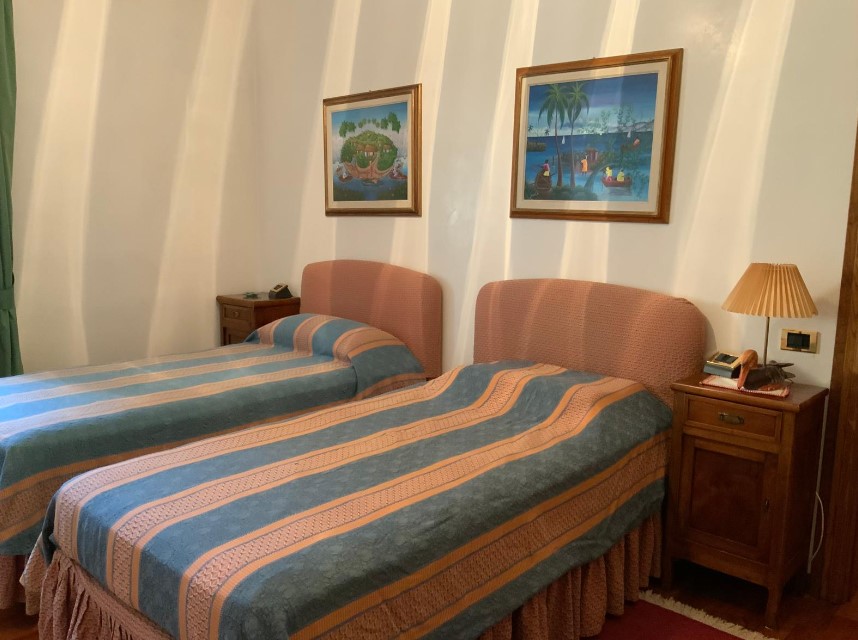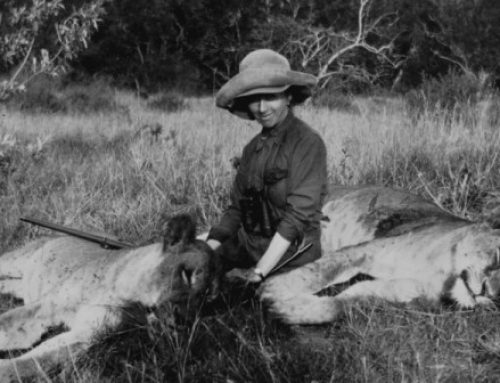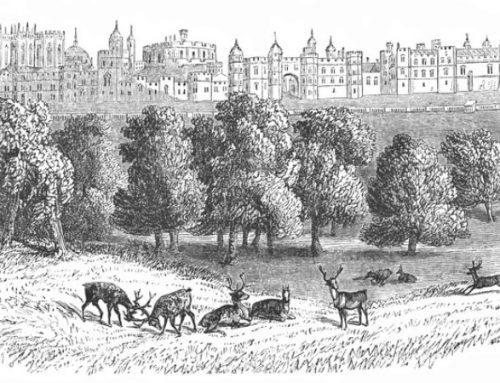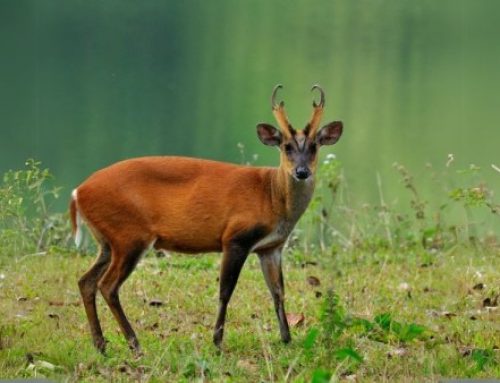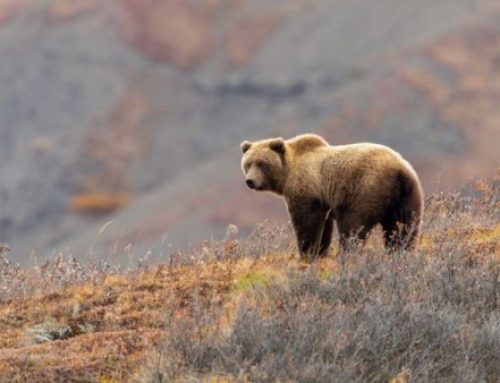Today, we invite you on a captivating journey through the centuries, exploring the rich tapestry of the history of hunting in Italy.
From medieval nobility to modern reserves, we’ll discover how the practice of hunting in Italy has evolved in the Bel Paese, shaping landscapes, cultures, and traditions, while stirring the souls of those who partake in the ancient art of hunting in Italy.
The Middle Ages: Hunting in Italy as a Noble Art
In the misty dawn of medieval Italy, hunting was far more than a mere pastime. It was a noble art, a symbol of power and prestige reserved for the aristocracy. Picture great lords, resplendent in their finery, organizing elaborate hunts across their vast estates. The air filled with the sound of horns, the baying of hounds, and the thundering of hooves as they pursued majestic stags, fierce wild boars, and other grand beasts through sun-dappled forests and over rolling hills.
Falconry, an art imported from the mysterious East, became particularly popular in Italian courts. Imagine the awe-inspiring sight of a falcon, silhouetted against the azure Italian sky, diving with lethal grace at its prey – a living embodiment of the nobility’s power and mastery over nature.
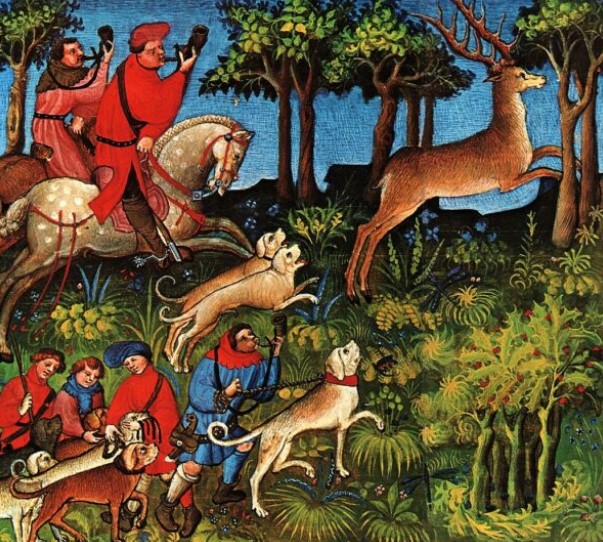
Italian medieval painting rapresenting a deer hunt
The Renaissance: Hunting as Spectacle
As Italy blossomed into the Renaissance, hunting transformed into a grand spectacle. Noble families like the Medici in Tuscany constructed lavish hunting reserves, known as “bandite.” Here, amidst the golden light of the Tuscan countryside, they organized magnificent hunting events that were as much about political intrigue and social climbing as they were about the thrill of the chase.
Picture yourself in a Medici hunting party: the air thick with excitement, the scent of autumn leaves mingling with the musk of horses and hounds. As you ride through landscapes that would inspire the greatest artists of the age, you’re not just hunting game – you’re participating in a living tableau of power, beauty, and the complex dance of Renaissance society.

Painting depicting “The Hunt of Cardinal Giovan Carlo de’ Medici at Cafaggiolo” – Giovanni Battista Stefanini and Francesco Arrigucci
The Modern Era: Democratization and Regulation
With the unification of Italy in the 19th century, hunting began to democratize. The thrill of the chase, once the exclusive domain of the aristocracy, became accessible to a broader swath of the population. Imagine the pride of a common man, stepping into the woods with his own rifle for the first time, feeling a connection to the land and its creatures that had once been the privilege of lords and ladies.
This period also saw the introduction of the first modern hunting laws, aimed at preserving wildlife and regulating hunting activities. It was a time of change, where the ancient traditions of the hunt began to meld with a growing awareness of conservation and sustainability.
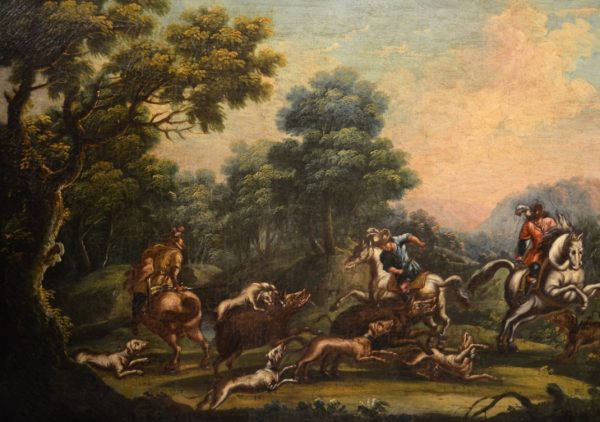
Vittorio Amedeo Cignaroli (Turin, 1730 – 1800). His technical ability and his rigorous craft earned him the esteem of the Savoy court and consequently of the Piedmontese nobles.
The 20th Century: Tradition Meets Conservation
The 20th century witnessed a growing tension between venerable hunting traditions and environmental concerns. Italy had to balance its rich hunting heritage with the need to preserve ecosystems and protect endangered species. Numerous protected areas and national parks were established, while hunting practices became increasingly regulated.
Picture the bittersweet emotions of a hunter in this era: the joy of continuing age-old traditions tempered by a newfound respect for the delicate balance of nature. The thrill of the hunt now came hand-in-hand with a deep sense of responsibility towards the land and its creatures.
Today: A New Equilibrium
In modern Italy, hunting is a strictly regulated practice that seeks to balance tradition, sport, and wildlife management. Today’s hunting reserves offer experiences that combine the excitement of the hunt with environmental conservation. Many areas, such as Tuscany, Umbria, and the Alpine regions, are renowned destinations for hunters from around the world, offering not just hunting opportunities but unique cultural and gastronomic experiences.
Imagine yourself in a Tuscan hunting lodge, the ancient stones whispering stories of hunts long past. As you set out in the misty dawn, your footsteps echo those of countless hunters before you. The thrill of the chase is heightened by the knowledge that you’re part of an unbroken chain of tradition, stretching back through the centuries.
A Journey into Tradition
For the modern hunter, a hunting trip to Italy is more than just an opportunity to practice the sport – it’s a true immersion in history. From ancient noble reserves transformed into modern hunting lodges, to picturesque medieval villages that still host festivals tied to hunting traditions, every corner of the country offers a piece of this rich heritage.
Whether you’re pursuing pheasants in the Tuscan hills, their iridescent feathers flashing in the golden Italian sunlight, stalking chamois in the majestic Alps, where every breath of crisp mountain air invigorates your soul, or participating in a wild boar hunt in rugged Sardinia, with the scent of myrtle and sea salt in the air, remember that you are taking part in a millennial tradition.
Hunting in Italy is a journey through time, an experience that unites past and present in a single, thrilling adventure. It’s a chance to connect with the land, to feel the pulse of history beneath your feet, and to understand the deep, primal connection between man and nature that has shaped Italian culture for centuries.
As you raise your gun or nock your arrow, know that you stand in the footsteps of kings and pheasants, artists and poets, all bound together by the timeless allure of the hunt. In Italy, every hunt is a story, every landscape a living canvas, and every moment a brush with history.
The Middle Ages and Renaissance: Nobility and the Hunt
In the misty dawn of medieval and Renaissance Italy, hunting was the privilege of the aristocracy. Families like the Este in Ferrara and the Gonzaga in Mantova were renowned for their elaborate hunting parties. Imagine the thrill of a noble hunter, mounted on a magnificent steed, as the horns sound and the chase begins through the lush forests of their vast estates.
The Este hunting estate in Mesola, nestled in the Po Delta, remains a protected natural area today. The castle hosts the “Museum of the Deer and the Mesola Wood” Here, you can witness the descendants of the very deer that once were prey to the nobility, their graceful forms moving through sun-dappled glades, a living testament to Italy’s hunting history.
Mesola Castle is one of the 19 esteemed residences, known as Delizie, belonging to the House of Este. Situated in Mesola on Piazza Umberto I, the castle was constructed between 1578 and 1583 under the direction of Duke Alfonso II d’Este. It served as the Este family’s residence during their hunting excursions in the Mesola Wood. The castle’s design, featuring four imposing towers, crenellated walls, and expansive windows, gives it the appearance of both a fortress and an elegant mansion, all enclosed within nine miles of protective walls.

The Cervo del Bosco della Mesola is an animal with unique characteristics of its kind, in terms of physical appearance and behavior, and is present only in the Nature Reserve adjacent to the Castle. The Museum dedicates an entire section to it through which to discover its peculiarities and its presence in the nature, history and art of the tradition of the Estense Court of Ferrara.
The Medici in Tuscany: A Continuing Tradition
The Medici family of Tuscany left an indelible mark on Italian hunting culture. Their “bandite” or hunting reserves, such as Artimino near Florence, are now renowned destinations for hunters from around the world. Picture yourself at the Medici Villa of Artimino, known as “La Ferdinanda,” where you can still experience exclusive hunts on its vast grounds. Feel the weight of history as you tread the same paths as Renaissance princes, your heart pounding with the same excitement they felt centuries ago.

Villa La Ferdinanda, a sprawling residence commissioned by Grand Duke Ferdinando I de’ Medici in 1596. Ferdinando originally built the villa “because he loved hunting and the area around Artimino was the perfect spot.”
The Corsini Princes of Florence: La Marsigliana
We must not forget the Corsini family, one of Florence’s most illustrious noble houses. Their hunting estate, La Marsigliana, located in the Maremma region of southern Tuscany, continues the family’s centuries-old hunting tradition. This vast property, spanning over 5,000 hectares, offers a variety of hunting experiences, from driven pheasant shoots to stalking for wild boar and deer.
Put yourself walking through the estate’s diverse landscapes, from Mediterranean scrubland to ancient oak forests. The air is filled with the scent of wild rosemary and thyme, and the distant call of a pheasant echoes through the trees. As you raise your gun, you’re not just a hunter, but a participant in a tradition that has been maintained by the Corsini family for generations, a living link to Italy’s aristocratic past.
The Sforza in Lombardy: From Courts to Modern Blinds
In Lombardy, the Sforza were known for their hunting expeditions in the woods around Milan. Today, in areas once ruled by the Sforza, such as Lomellina, hunting continues, particularly for waterfowl in the flooded rice fields. Imagine the serene beauty of dawn breaking over the misty paddies, the anticipation building as you wait for the first flight of ducks to appear against the rosy sky.
The Borromeo Family: A Legacy of Aristocratic Hunting and Conservation
The Borromeo family, a prominent Italian noble dynasty dating back to the 15th century, has a rich history deeply intertwined with hunting traditions. They are closely associated with the Lago Maggiore region, where they own the Borromean Islands. Key estates like Isola Madre, Rocca di Angera, and Borromeo Castle in Peschiera Borromeo were historically used for hunting, serving as settings for sport, social networking, and estate management.
Hunting was a significant aspect of aristocratic life, symbolizing skill, bravery, and power. Over time, the family’s role in conservation grew, with areas like Isola Madre’s gardens now serving as botanical preserves. While traditional hunting has declined, the Borromeo estates remain, offering public access to their natural beauty and historical significance, reflecting the evolution of Italian aristocratic hunting from nobility to conservation.

Borromeo’s was the family that ruled Milano for up a century and this is their hunting lodge, now a famous restaurant
The Savoy: From the Alps to the Plains
The royal Savoy family left an important hunting legacy, especially in Piedmont. While the Gran Paradiso National Park, originally a royal hunting reserve, is now a protected area, hunting still takes place in the surrounding regions. In the Val di Susa and Val Chisone, hunters still pursue chamois and deers, following ancient traditions. Picture yourself high in the Alps, the crisp mountain air filling your lungs as you carefully stalk your prey across rocky slopes, feeling a connection to the land and its history with every step.
Princes and Dukes of the South: Hunting and Tradition
In Southern Italy, families like the Ruffo of Calabria and the Caracciolo in Campania maintained vast hunting estates. Today, in Calabria, the Gerace estate still offers exclusive hunting experiences. In Campania, the Picentini Mountains, once noble hunting grounds, are now a prized destination for wild boar hunting. Imagine the adrenaline rush as you track a boar through the dense Mediterranean undergrowth, the scent of wild herbs filling the air.
Modern Hunting: Aristocratic Heritage and New Realities
Today, many ancient aristocratic estates have transformed into exclusive hunting reserves, keeping the tradition alive.
Hunting in Italy today means immersing yourself in centuries of history and tradition. Whether you’re on a wild boar drive through Tuscan woods once frequented by the Medici, or stalking chamois in the Alps beloved by the Savoy, each experience is a journey through time.
Modern Italian hunting reserves offer not just the thrill of the hunt, but the opportunity to stay in historic mansions, savor traditional cuisine, and immerse yourself in local culture. Many of these estates practice sustainable wildlife management, balancing hunting activity with environmental conservation.
As you prepare for your hunt with your rifle, feel the weight of history on your shoulders. The same excitement that coursed through the veins of nobles centuries ago now flows through yours. The rustle of leaves underfoot, the crisp morning air, the distant call of your quarry – all these sensations connect you to generations of hunters who came before.
The Tradition of Venetian Aristocrats Duck Hunting in the Venetian Lagoon
In ancient times, the Venetian Lagoon wasn’t just a breathtaking setting for the magnificent city of Venice—it was also the backdrop for one of the most cherished traditions of the Venetian aristocracy: duck hunting. This practice, deeply rooted in the cultural and social fabric of Venice, was much more than a mere pastime. It was a symbol of status, a display of skill, and a connection to the unique environment that defined Venetian life.
Prominent noble dynasties such as the Contarini, Dandolo, Morosini, Giustiniani, and Cornaro were avid participants in this tradition. These families, renowned for their influence and power in the Venetian Republic, would venture into the expansive lagoon to partake in duck hunting. The lagoon, with its labyrinth of marshes, mudflats, and shallow waters, was an ideal habitat for various species of ducks and other waterfowl. These hunts often took place during the cooler months when the lagoon was teeming with migratory birds.
Duck hunting was not just about the pursuit of game; it was a social event, bringing together the elite of Venetian society. These outings provided an opportunity for nobles to engage in camaraderie, forge alliances, and discuss matters of politics and commerce, all while surrounded by the serene beauty of the lagoon. The activity required skill and precision, as hunters had to navigate the intricate waterways and use specialized techniques to successfully capture their quarry.
The ducks themselves held a significant place in Venetian cuisine. The spoils of these hunts were often featured in grand feasts, where they were prepared in elaborate dishes that showcased the culinary prowess of Venice. These meals were yet another way for the aristocrats to display their wealth and sophistication, as well as their connection to the natural bounty of the lagoon.
Over time, as Venice evolved and the political landscape changed, the tradition of duck hunting in the lagoon gradually waned. However, it remains a fascinating aspect of Venetian history, offering insight into the lives of the city’s noble class and their relationship with the environment that sustained them.
Today, while the ancient tradition has largely faded, the Venetian Lagoon continues to be a vital ecological zone, with efforts focused on conservation and the protection of its diverse wildlife. The legacy of duck hunting lives on as part of the rich tapestry of Venetian culture, a reminder of a time when the lagoon was both a hunting ground and a symbol of aristocratic identity.
Hunting Estates in the Venetian Lagoon: Cà Zuliani, Valle Pirimpiè, and Valle San Leonardo
The Venetian Lagoon is home to several historic hunting estates, known as “casoni,” which have been central to the tradition of “caccia in valle” (hunting in the valley) for centuries. Among these, Cà Zuliani, Valle Pirimpiè, and Valle San Leonardo are particularly notable for their rich history and ongoing management of hunting activities.
Cà Zuliani
Cà Zuliani is one of the most prestigious hunting estates in the Venetian Lagoon, known for its vast expanse of wetlands and rich biodiversity. Historically, this estate was a favored spot for the Venetian nobility, who would retreat here for duck hunting. The estate is characterized by its intricate network of canals, marshes, and small islands, making it an ideal habitat for waterfowl.
Valle Pirimpiè
Valle Pirimpiè, another significant hunting estate, is renowned for its traditional “caccia in valle” practices. This estate has preserved much of its original structure, with carefully maintained waterways and natural habitats that support a diverse range of bird species. Hunting here is not just a recreational activity but also a carefully regulated practice aimed at maintaining the ecological balance of the area.
Valle San Leonardo
Valle San Leonardo is known for its serene and picturesque landscape, which has been a hunting ground for centuries. Like the other estates, it features a mix of open waters, marshes, and reed beds, creating a perfect environment for duck hunting. The estate is managed with a strong emphasis on conservation, ensuring that the natural habitat remains sustainable for future generations.
Managing “Caccia in Valle” Today
Today, “caccia in valle” is a highly regulated activity, with a strong focus on conservation and sustainable practices. The management of these estates involves:
Habitat Management: Estate managers work to preserve and enhance the natural environments within these valleys. This includes maintaining the delicate balance of water levels, ensuring the growth of native plant species, and protecting the habitats of various bird species.
Regulated Hunting: Hunting is carefully controlled, with strict regulations on the number of birds that can be hunted and the seasons during which hunting is permitted. This ensures that hunting does not negatively impact the bird populations or the overall ecosystem.
Conservation Efforts: Many of these estates are involved in broader conservation initiatives, working alongside environmental organizations to protect the biodiversity of the Venetian Lagoon. This includes monitoring bird populations, conducting research, and implementing measures to mitigate any environmental impact.
Cultural Preservation: These estates also play a role in preserving the cultural heritage of “caccia in valle.” They often host events and educational programs that highlight the historical significance of hunting in the lagoon, ensuring that this tradition is passed down to future generations.
Overall, the management of Cà Zuliani, Valle Pirimpiè, and Valle San Leonardo reflects a deep respect for both the natural environment and the cultural traditions of the Venetian Lagoon. These estates continue to be a testament to the harmonious coexistence of human activity and nature, maintaining a centuries-old tradition while adapting to modern conservation needs.
Remember, many of these historic estates require advance reservations and often offer complete packages including accommodation, meals, and expert guides. It’s a unique way to experience Italy, combining the passion for hunting with total immersion in the history and culture of the Bel Paese.
Whether you’re a seasoned hunter or a novice eager to connect with this ancient tradition, Italy’s hunting estates offer an unparalleled blend of sport, history, and natural beauty. Every hunt is not just a pursuit of game, but a step back in time, a chance to walk in the footsteps of kings and nobles, and to feel the beating heart of Italy’s hunting heritage.
Top 10 Frequently Asked Questions by Foreign Hunters Before Booking a Hunt in Italy
1. Do I need a special license or permit to hunt in Italy as a foreigner?
Yes. All foreign hunters must obtain a temporary Italian hunting license, as well as an insurance policy valid in Italy. Montefeltro will arrange both on your behalf.
2. Can I bring my own firearms into Italy?
Yes, but you need a valid European Firearms Pass (for EU citizens) or a temporary import permit (for non-EU hunters). The process must be arranged in advance and includes declaring the firearm upon arrival. We can assist with this paperwork, or provide rental rifles from our partners Benelli and Beretta, to avoid complications.
3. What species can I hunt in Italy, and when is the season?
Italy offers an extraordinary variety of game, including:
- Red deer, fallow deer, and roe deer
- Chamois and mouflon
- Wild boar
- Hare, pheasant, partridge, and woodcock
Seasons vary by region and species. For example, chamois is hunted from September to December, while wild boar can be hunted from all year long.
4. Where are the best hunting areas in Italy?
Some of the most renowned hunting grounds include:
- The Alps (Piedmont, Trentino, Aosta Valley) – for chamois and ibex
- Tuscany and Umbria – for roe deer, wild boar, and driven hunts
- Elba Island – for mouflon
- Central Apennines – for mixed game and challenging terrain
Each region has its own charm and regulations, so the choice depends on your goals and preferences.
5. Can I keep my trophy and take it home?
Yes, but CITES regulations and local export permits may apply, depending on the species. Reputable outfitters provide trophy preparation and export services, and can manage taxidermy and shipping through certified channels.
6. Do I need to speak Italian?
Not necessarily. Our professional hunting guides and outfitters speak English or another foreign language. However, having a local interpreter or a bilingual guide is always an advantage for logistics and cultural connection.
7. What is included in a typical hunting package?
Most packages include:
- Hunting license and insurance
- Firearm import assistance or rifle rental
- Full-board accommodation (often in charming agriturismi or hunting lodges)
- Professional guide or PH
- Transportation in the field
- Trophy fees or daily fees depending on the species and hunt style
Always clarify what’s included and what may come as an extra (e.g., trophy shipping, taxidermy, tips).
8. Is hunting in Italy ethical and sustainable?
Yes. Hunting in Italy is strictly regulated, with quotas, biological management plans, and controls enforced by regional authorities and wildlife biologists. Traditional hunting methods such as stalking, fair-chase, and small-scale driven hunts are commonly practiced, respecting local ecosystems and ethical standards.
9. Can I bring non-hunting companions or family members?
Absolutely. Italy is the perfect destination for combining hunting and cultural tourism. Many hunting lodges are located near historical towns, vineyards, thermal spas, and UNESCO sites, making it ideal for couples or families traveling together.
Montefeltro, in particular, is part of one of the largest tourism groups in Italy, with a national network of travel agencies. This means that while hunters enjoy the thrill of the field, non-hunting companions can rely on dedicated staff to organize tailor-made leisure experiences: wine tastings, art city tours, cooking classes, spa retreats, luxury car and yacht factory tours like Riva and Ferrari or visits to the Beretta Museum or Benelli firearms factory or shopping outings.
Whether you’re traveling with a partner, friends, or family, Montefeltro can create a balanced, enjoyable itinerary for everyone, ensuring the journey becomes a memorable experience for the whole group.
10. How far in advance should I book?
It’s best to book 6 to 12 months in advance, especially for high-demand periods like autumn in Tuscany or the chamois rut in the Alps. This ensures permit availability, prime dates, and enough time for firearm paperwork.

